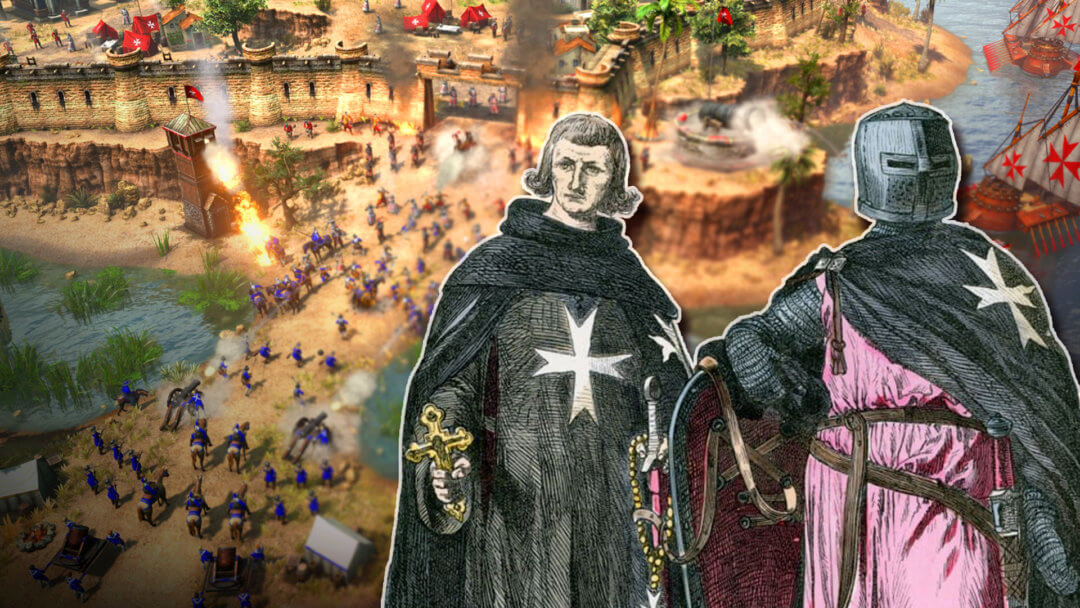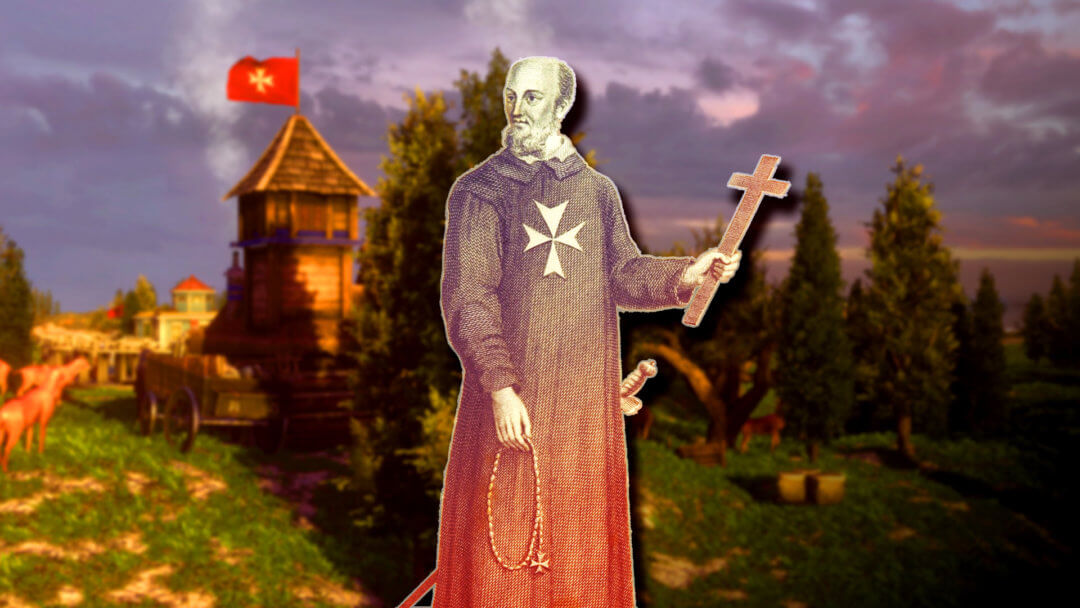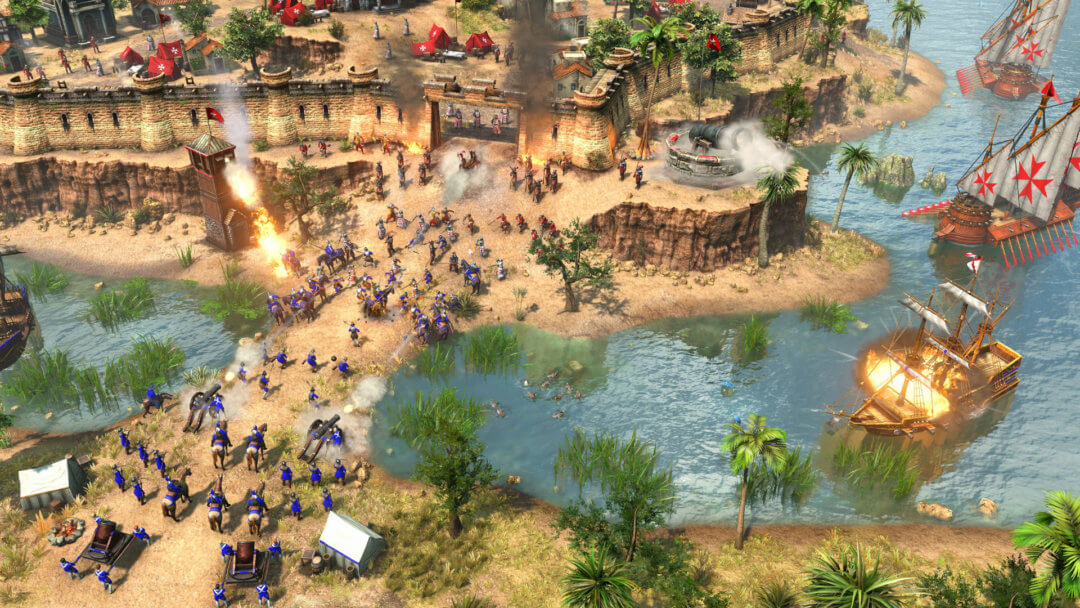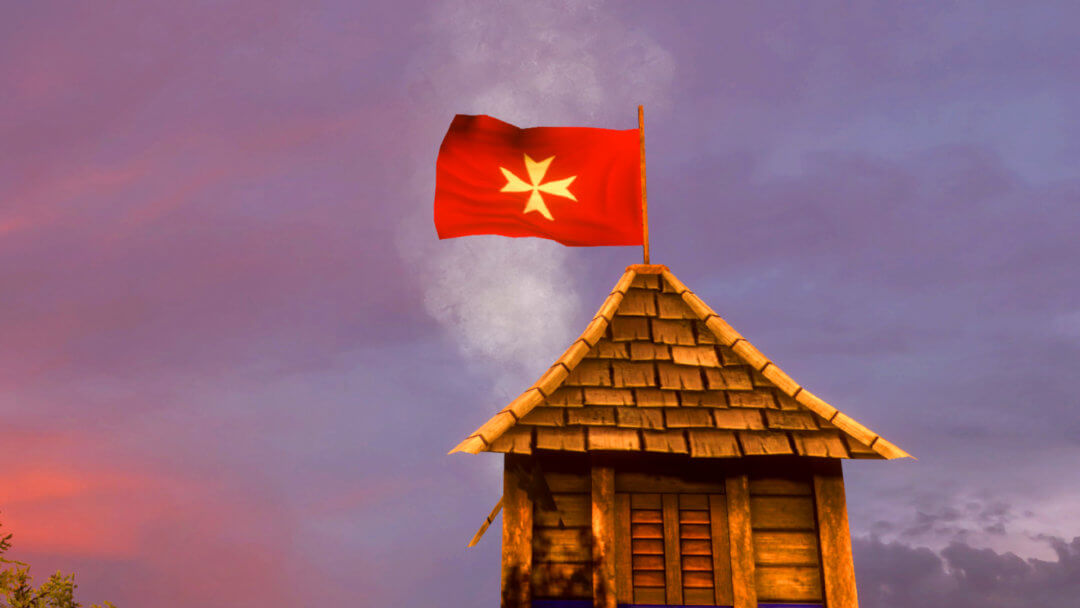
Good day fellow Age fans!
This week I traveled through some of the paths crossed by crusaders on their way to the Holy Land, conversing with the people at the local hostels, care centers, and markets. They shared the stories of many people, but the one that stood out the most to me was that of healing merchants turned mighty knights. Who were these people? How did they earn the title of knight? Let’s find out!
The Knights Hospitaller, also known as the Knights of Malta*, were originally founded in a hospital in Jerusalem by Amalfi merchants as a charitable religious order, whose focus was aiding sick and poor pilgrims during their journey to the Holy Land, Jerusalem. When the Christian conquest took over Jerusalem in 1099, the knights’ leader, a monk named Gerard, led and expanded the order’s tasks to build medical centers, hostels, and rest areas across the Holy Land and the routes leading to it (mainly across Italy). The goal of these new centers was to aid as many pilgrims as possible in the arduous journey they had embarked on.
Gerard and his order’s demanding work did not go unnoticed by church leadership, and in 1113, Pope Paschal III enacted a papal bull which acknowledged and confirmed their order. This recognition earned these men the new name of Hospitallers of St. John of Jerusalem*. Having the support of the church meant this order had access to new funding, allowing for these men to continue to build and expand the number of hostels and medical centers they could establish while taking on the new task of waging war against their enemies. As a result, Hospitallers became one of the most powerful forces in the Holy Land.

When Gerard’s successor, Raymond de Puy, took over leadership, he expanded the wealth and resources of the order. In addition, de Puy established a system of protection for crusaders and the Holy Land from enemy attacks, officially making the Knights of Hospitaller into a military order. These knights were leaving their mark on the land, but their control over the territory would be short lived.
The Hospitallers’ control over Jerusalem fell in 1187 after Christian power over the Holy Land was recaptured by Muslims. This shift in the political and religious landscapes pushed the Knights Hospitaller to relocate their home base to Margat and then to Acre. Their time in Acre was also short, leading them no other option but to move once again, this time to Cyprus and once more to their final destination, Rhodes. The settlement of these knights at Rhodes was a successful conquest, creating a barrier for Muslim trading and shipping to the Mediterranean lasting for almost 200 years. The hold on this land defined them the last Christian outpost in the east. Unfortunately for these knights, when Süleyman the Magnificent, the sultan of the Ottoman Empire, placed his efforts towards expanding, he focused his attacks on Rhodes, pushing out Hospitallers and officially leaving them without identifiable headquarters.

No longer having a home base meant the knights wandered across Europe attempting to find a new place to settle and reestablish the humanitarian and military duties they once promised to complete in the name of good and the church. It wasn’t until 1530 that the Holy Roman Emperor, Charles V, gifted the archipelago of Malta to Hospitallers, but the risk of being attacked once again by the Ottoman Empire remained. In 1565, the knights were once again attacked by the Ottoman army but were able to fend off Süleyman’s attempt to siege Malta thanks to the military leadership of Jean Parisot de la Valette. This battle, later known as the Siege of Malta, became one of the most famous sieges known to this day. Süleyman’s failed attempt depleted Turkish armies but caused major damages to the Maltese archipelago.
Regardless of the damages and grueling battle, the knights had the opportunity to name a new capital city. Without hesitation, they named their new capital Valletta, in honor of the knights’ fearless leader. This new capital established a new administrative system for the region and hospitals that became world-renowned health centers, welcoming people from across the globe to Malta for state-of-the-art care.

The knights held power over this region for hundreds of years, but that would all come to an end in 1798 when Napoleon, a French military and political leader, sieged the land. From then on, the Knights Hospitaller would slowly give up their military and land seizing efforts, instead refocusing on their original humanitarian efforts. The Knights Hospitaller are still an established order with their headquarters located in Rome, serving primarily as the institution which issues passports and leads some humanitarian projects as well.
Now that you have a brief history behind the order of these mighty Knights Hospitaller, why not test your skills with the Maltese civ in Age of Empires III: Definitive Edition — Knights of the Mediterranean?
I sure am…
Sage .
P.S. Are you ready to pick the adventure?
** The Knights Hospitaller were known by many different names throughout history. The names mentioned above are just a few examples of those names.